|
The image of a female figure in this or that interpretation - one of widespread motives of an architectural decor of apartment houses of Sergiev Posad. More often it is placed in the centre of top with the volutes departing every which way bent by stalks and leaves (Klementevskaya street, Kirov street (further Dolgo-Dmitrovskaya), etc.). Anthropomorphous figures, finishing cheeks of platbands in the form of so-called "cones" is found less often (Klementevskaya street). Sometimes, there is a three-petal flower - a symbol of eternally reviving life in such "cone" (a Fig. 5,6). .
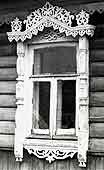
Fig. 5. House of the beginning of 20th century. Kirov street |
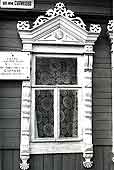
Fig. 6. House of the beginning of 20th century. Suvorov street
|
The important and integral element of a decor of pilasters, pediments of skylights and, of course, window platbands are diverse images of the sun in the form of vortical and round sockets, the rhombuses, six and eight-final stars, multipetal colours.
It is necessary to notice that all these ancient motives so are organically twisted in an ornament outline, that only the stare will find their outlines in freakish lines of twisted stalks and runaways or in strict rhythms of purely geometrical pattern.
Houses built in the 80-th of 19th century, have magnificence of a carved decor, in which basis the vegetative ornament (Fig. 7) allocates. One of such houses, decorated from top to bottom by the most thin lace, stood in the Kestarnaya street. Two richest friezes underlined openwork cornices, whimsical patterns of platbands of both floors, a through lattice of a verandah over a porch, - decorated it until recently.
The unknown master has applied here an openwork and unprofitable carving which set off and supplement each other. And if in the difficult fulfilled curls of runaways with three-petal flowers clearly see national forms of a vegetative pattern that rectangular and diamond-shaped overlays of the friezes, different artful designs of lines, testify, most likely, to influence of art of a book miniature.
|
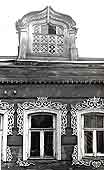
Fig. 7. House of 1880th. Kirov street |
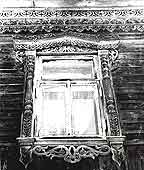
Fig. 8. Window platband. End of 19th century. Suvorov street |
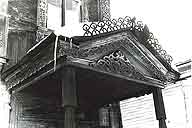
Ðèñ.9. Íàâåñ êðûëüöà êîí. ÕIÕ â.
óë. Ñóâîðîâà (áûâø. Øòàòíàÿ Ïðàâàÿ) |
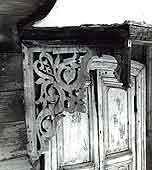
Fig. 9. Canopy of a porch. End of 19th century. Suvorov street |
Variety of residential buildings of the Sergiev Posad, concerning to the end of the last century, characterizes proportionality, balance of carved decoration and a smooth field sewn up with boards of walls. One of them is on Suvorov street (further Regular Right). In its decor wooden openwork elements are successfully added by patterns ïðîñå÷íîãî metal (Fig. 8).
Main entrances in residential buildings of our city, as a rule, had identical registration: panelled doors, arms or the columns supporting a canopy. (Fig. 9,10).
In regions of old building there are seldom houses with balconies and they concern, basically, to the beginning of the 20th century One of such buildings is located in the depth of manor (Bolotnaya street), therefore its platbands and carved patterns of balcony’s friezes are solved by close ups. At the same time powerful railing post of columns with the openwork semisun at the top of everyone, two strips of a through lace, - give to the house the big decorative effect (Fig. 11,12,13).
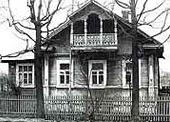
Fig. 11. The house. Early of 20th century. Vifansky street |
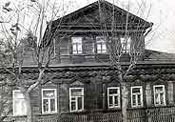
Fig. 12. The house.1901. Cooperative street) |
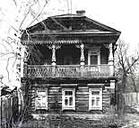
Fig. 13. The house. Early of 20th century. Bolotnaya street |
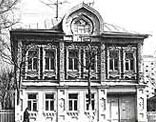
Fig. 14. The house. 1912. Avenue of Red Army
|
The architectural decor of residential buildings of boundary of 19th-20th centuries was actively enriched by the motives borrowed from other kinds of national creativity: embroideries, laces, weaving.
The interest which awakened at this time to sources of national culture was expressed in constructions of "Russian style” which has found reflexion in extended, reminding northern kokoshniks, pediments (the house of the end of 20th century on Cooperative street and the house similar to it on First Fish and Vifansky street) in aspiration to repeat entirely or partially more ancient monuments of cult and inhabited architecture (Fig. 14,15,16).
The return to technics «carvings on a background» with which once began sawn carving (Fig. 17) observes on many houses of 1910-1920th years.
|
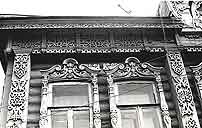
Fig. 15. The house. 1912. Avenue of Red Army (further Moscow Street) |
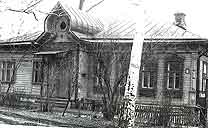
Fig. 16. The house. Early of 20th century. Bulvarnaya street |
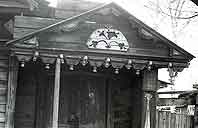
Fig. 17. A porch canopy. Early of 20th century. Klementevskaya street
|
As a whole, it is necessary to notice that character of the architectural shape of residential buildings of Sergievsky Posad of 19th - the beginning of 20th centuries was formed as a result of mastering and creative processing by national masters of centuries-old building and art traditions. Many houses, certainly, have a charm of monuments of Old Russian architecture of the Trinity St.-Sergius Monastery - a historical center of Sergievsky Posad.
Different styles of an architectural decor of houses, the combination of a regular and free lay-out of streets, indissoluble communication with a landscape give to separate corners of an old part of modern Sergiev Posad a unique originality. Our artists as K.Juon, V.Sokolov, T.Mavrina, N.Barchenkov, N.Beljaev were embodied our city such, just like this we aspired to reflect it in our collection of the architectural carving of Sergiev Posad of 19th- beginning of 20th centuries.
V. Zhigulyova
|
|


